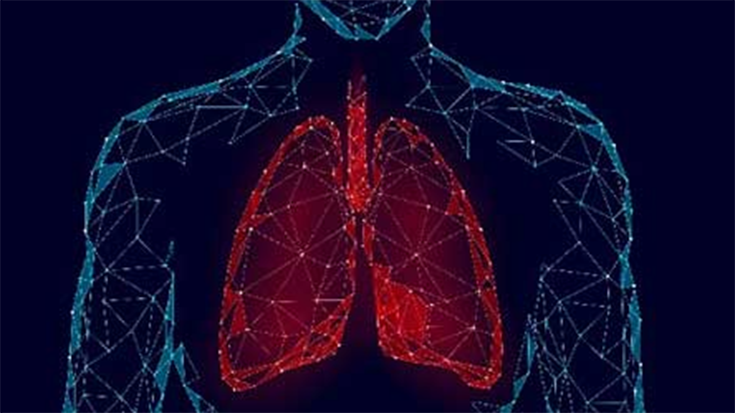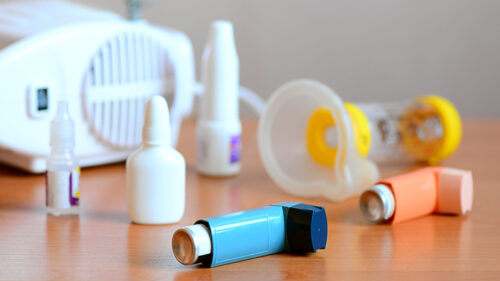
By Debbie Bunch
July 28, 2025
Wearable Stethoscope in the Works
Researchers from South Korea, working with colleagues at the University of Texas at Dallas, reported promising results for a wearable stethoscope dubbed the Lung-Sound-Monitoring-Patch (LSMP) in a paper published in Engineering.
The main components of the device, which can be attached to the skin to monitor lung sounds over time, are a uni- and omni-directional MEMS microphone, a microcontroller unit, and a lithium polymer battery.
The investigators tested the device in healthy subjects, pediatric asthma patients, and elderly patients with COPD. Results showed that the LSMP extracted heart rate and respiratory rate from bioacoustic signals more effectively than e-stethoscopes in healthy individuals.
In pediatric asthma patients, the device was able to analyze the acoustic characteristics of wheezing and normal breathing. In elderly COPD patients, it was able to distinguish between normal and abnormal breathing, despite noisy environmental challenges.
The researchers also developed an AI-based algorithm for the device, which utilizes a two-dimensional convolutional neural network to classify breathing sounds and count wheezing events. The model was trained with augmented lung-sound data.
When they tested the event-counting algorithm in a COPD patient over time, they found that it achieved an 80.5% match rate with the clinician’s count, which they believe demonstrates the device’s high accuracy in ongoing lung sound monitoring.
The investigators believe the device holds great promise for treating people with chronic lung conditions, noting that such monitoring can provide valuable information on factors related to worsening symptoms, such as cough, average heart rate, dyspnea, and wheezing.
Plans are now underway to enhance the LSMP through the integration of active noise cancellation technology. Read Press Release Read Full Paper

Fossil Fuel Plant Closure Significantly Reduced Respiratory-Related ED Visits
According to researchers from the NYU Grossman School of Medicine, shutting down a coal-coking plant located on an island in the Ohio River near Pittsburgh, PA, resulted in an immediate decrease in emergency department visits for respiratory conditions and a reduction in the number of children requiring emergency department care for asthma.
The Shenango plant shuttered in 2016, and within a few weeks, pediatric asthma visits dropped by 41% and weekly respiratory-related emergency visits declined by 20%. Pediatric asthma visits continued to decrease by 4% every month through the end of the study.
Over the longer term, the study found that COPD hospitalizations also dropped.
The findings were based on readings from local and federal air quality monitors, as well as data on healthcare utilization for the three years preceding and the three years following the plant’s closure.
“This study provides rare, in-the-field evidence that the closure of a major industrial pollution source can lead to immediate and lasting improvements in the lung health of those who live nearby,” said first author Wuyue Yu, PhD. “By tracking health outcomes before and after the coke plant closure, we were able to isolate the effects of reduced air pollution and observe that cleaner air translates into fewer respiratory emergency visits and hospitalizations.”
Senior author George Thurston, ScD, noted that the reductions in respiratory health effects seen in the study were significantly greater than expected, leading the researchers to conclude, “emissions from such fossil fuel-related sources are especially toxic.”
The study was published in the American Journal of Respiratory and Critical Care Medicine. Read Press Release Read Abstract

Putting Post-COVID Lung Abnormalities into Perspective
Health officials have estimated that, on average, 50% of people who are hospitalized with COVID-19 have alternations on their chest CT scans and 25% have restrictive pulmonary function abnormalities four months following their infection. But most of the time, these changes stabilize or regress over time.
Managing this patient population has been a challenge; however, a new consensus statement developed by 21 chest radiologists from three international radiology organizations should make the task easier. The key recommendations emerging from the paper, which Radiology published, include:
- The use of chest CT for patients with persistent or progressive respiratory symptoms three months after infection.
- The use of low-dose CT for follow-up examinations.
- The use of the Fleischner Society glossary of terms to describe post-COVID-19 lung abnormalities correctly and avoid the term “interstitial lung abnormality.”
Statement author Anna Rita Larici, from the Università Cattolica in Rome, emphasizes the importance of using the right name for the condition, both to ensure appropriate follow-up and to avoid misinterpreting post-COVID-19 lung abnormalities as an early manifestation of interstitial lung disease.
“The term ‘post-COVID-19 residual lung abnormalities’ should always be used in these patients, and references to pulmonary fibrosis, which is a very different and, above all, progressive disease, should always be avoided,” she said.
She and her fellow authors believe the consensus statement will promote a uniform approach to diagnosing lung changes in the CT scans of patients with persistent symptoms due to long COVID. Read Press Release Read Abstract








